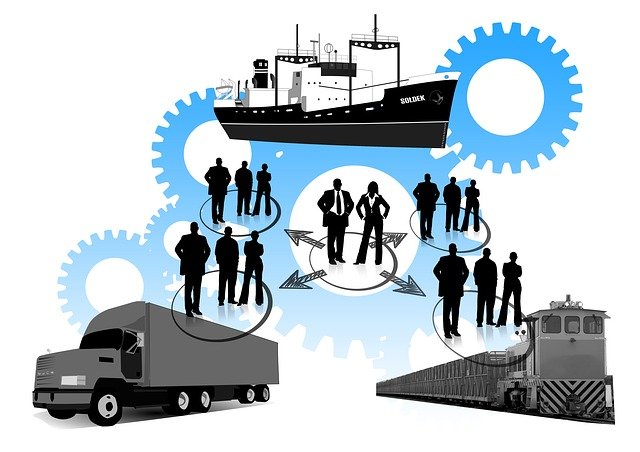This Y-Combinator backed e-Commerce fulfillment and shipping company allows online brands in India to offer next-day delivery amidst the present crisis.
In the past one year, the COVID-19 pandemic has fueled an unprecedented growth in India’s e-Commerce market. There is a rise of new D2C brands in virtually every market niche, and even the traditional retail brands are coming online in a big way.
Read more: En crypto: In conversation with an expert about DeFi Vs. CeFi and the emergence of CeDeFi
While India is leading in digital infrastructure of payments and commerce platforms, modern supply chain solutions are still out of reach for most of the brands due to high tech complexity and capital requirements.
While consumer expectations are changing radically in India, 80% of e-Commerce parcels outside Amazon still take 5-15 days to reach customers. With growing consumer expectations of instant gratification and next-day delivery, the industry needs an ally to help them meet these expectations.
This is the space WareIQ is filling in with this fulfillment network and technology platform. The company offers a platform that clients can use just how they would use a cloud computing platform.

Harsh Vaidya
Trying to combat the supply chain uncertainties, WareIQ has been mitigating supply chain risks for online brands in India by distributing goods across its Pan-India network and ensuring the operations continuity is maintained irrespective of new hindrances with lockdown.
The Tech Panda spoke to Harsh Vaidya, CEO and Founder of WareIQ about how the company is managing its services across the nation at this crucial hour.
“Trying to combat the supply chain uncertainties, WareIQ has been mitigating supply chain risks for online brands in India by distributing goods across its Pan-India network and ensuring the operations continuity is maintained irrespective of new hindrances with lockdown. At the same time, we have scaled up capacity to support essential commodities and COVID related supplies, where the spike in volumes has been exponential,” he says.
Impact of COVID-19 on Ecommerce Logistics
2020 was a challenging year for many. At the same time, ecommerce grew like never before. Vaidya explains the impact of the crisis on their company.
“While the economy might have experienced stalling with rampant supply chain disruptions in the past year owing to the pandemic induced lockdowns, WareIQ has experienced 100% volume growth month over month in that duration. This led us to accelerate our network expansion. However, soon the business witnessed a surge in volumes across zones and we had to expand our fulfilment presence in all metros as a result,” he says.
We spent a lot of time with traditional retail brands who had to make a quick transition to online, where they didn’t have a supply chain required for fast speed
They also saw a large percentage of offline commerce shifting to online.
“We spent a lot of time with traditional retail brands who had to make a quick transition to online, where they didn’t have a supply chain required for fast speed. Few segments that picked up fairly well for the business include FMCG, personal care and cosmetics, and nutraceuticals.
The Rise of Modern Commerce Platforms in India & How WareIQ Acts as an Enabling Logistics Layer
In its initial foundation years, there were just two primary platforms available for online sellers that made business cases – Amazon and Flipkart. Vaidya says that in the last three-four years, there has been a rise of new modern commerce platforms that are showing great engagement and have emerged with strong business cases for online brands in India.
There is a rise of D2C commerce stack powered by Shopify, Woocommerce and other similar platforms; social commerce platforms leveraging WhatsApp are on the rise; live-commerce (TikTok for commerce business models) are showing great adoption, and vertical marketplaces for Apparel, Cosmetics, F&B, and many other vertical niches are also picking up among online brands.
For most D2C brands scaling up in India, the demand is coming from all the zones which comprises Tier 1, Tier 2, and 3. To meet the scale, it is imperative for scaling a D2C brand to have a robust supply chain network that allows them fast shipping services to all the existing demand centers
Modern commerce platforms require modern logistics solutions to ensure fast shipping and great service levels across the platforms. Key functionalities that are expected are:
- Integrations to all modern commerce platforms
- Ability to integrate to multiple courier options – national and hyperlocal
- Central inventory backbone
- Distributed fulfillment network to allow brands being closer to customers
- Decision engine powered by AI/ML for brands to make informed decisions on inventory and courier placement.
WareIQ addresses all these spaces and has been powering brands across all the major commerce platforms.
“For most D2C brands scaling up in India, the demand is coming from all the zones which comprises Tier 1, Tier 2, and 3. To meet the scale, it is imperative for scaling a D2C brand to have a robust supply chain network that allows them fast shipping services to all the existing demand centers, which is where WareIQ comes in with its on-demand platform network to which brands can dispute their inventory and get it closer to their customers,” he explains.
Origin
WareIQ was founded in 2019 by Vaidya and Aayush Mattoo, who comes from the eCommerce and supply chain background in global markets, working with companies like Pitney Bowes and Delhivery. They started WareIQ with a vision to offer next-day delivery to all pin codes in India in the next three years.
The Rise of Micro-Warehousing
According to My Fulfillment Company, the term micro-warehousing refers to a system in which most of the fulfillment ecosystem resides outside the primary warehouse walls. This system involves opening several small warehouses in places such as shopping centers and strip malls, allowing for continuous swift delivery, providing customers the option of picking up their packages locally. This system has emerged as an appreciated innovation that has led to the streamlining of eCommerce operations across entire supply chains.
Customers are looking to get their product quicker, so the distance between consumers and the product must shrink
“Customers are looking to get their product quicker, so the distance between consumers and the product must shrink. What that means is the fulfillment centers need to be in urban demand centres which are prime real estates unlike traditional fulfilment hubs in city outskirts,” Vaidya explains.
The model of micro-warehousing is not new. It is already established in major e-Commerce economies like US and China, where same/next day delivery is becoming a norm, and not a differentiator.
Read more: {Zoom in: Edge Analytics} Skipping data centralization & jumping directly to analysis
Traditional supply chains were built for cost efficiency where distribution is centralized through one large format fulfilment centre to bring in efficiency of scale. This approach however sacrifices on speed as fulfillment is centralized while demand is distributed.
On the other hand, modern e-Commerce supply chains are built for speed and follow the path of distributed fulfilment to get closer to customers.
“As the fulfilment will continue to get distributed as a long-term trend, the size of warehouse will also go smaller as a key outcome,” he concludes.












